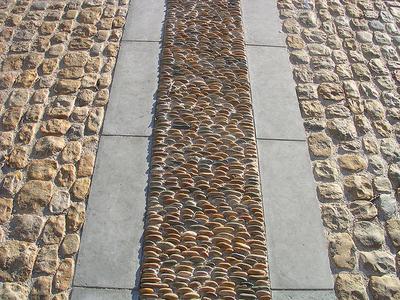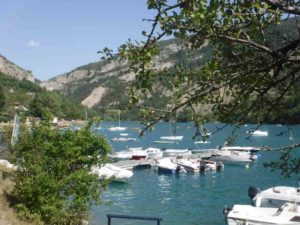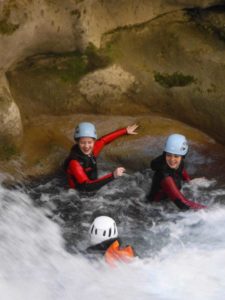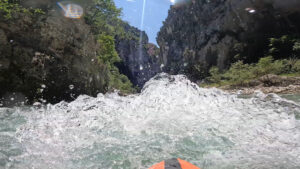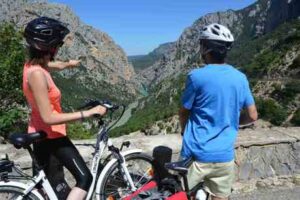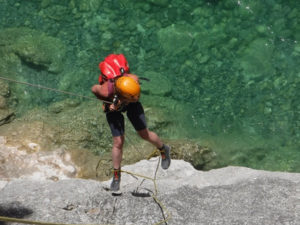For a long time now, stone has been present and exploited throughout the Mediterranean basin, particularly from Italy to France. From the walls that separate fields to houses and villages, it is used in the noblest and most essential constructions. But it is also the material of choice for paving roads, squares and streets. In Provence, what is called “calade” is both an ancestral technique and the name of this steep street, paved with rough stone, which alone symbolizes all the charm of the Provencal country.
Some ideas of activities to do in the Verdon during your hike
Here are some ideas of activities to book before or after your hike in la Calade.
– Book a guide for the Imbut Trail
– Book a guide for the Martel White Trail
– Enjoy an evening of astronomy on the shores of Lake St. Croix and sleep on site
– Watch the film Verdon Secret in 3D on a giant screen
From stone to calade
First of all, what is calade? What is certain, in any case, is that this is a term that you must know before setting off to discover the Verdon! A calade is a sloping street, paved with pebbles or stones. In Old French, the word “cal” means “stone”. This root gave us some more frequent words like calcaire (limestone), caillou (pebble), calanque.
The calade is therefore a ground covered with stones. Originally, the caladeurs built these streets “en calade” mainly in sloping villages in order to allow rainwater to run off.
Calades are usually made with local stones and paving stones, pulled from nearby fields or from the banks of nearby streams.
What better way to discover them than by visiting the Verdon? Indeed, in this natural territory with marked reliefs, you will have many opportunities to see and walk on these calades, which are at the origin of the charm of the hilltop villages of the Verdon.
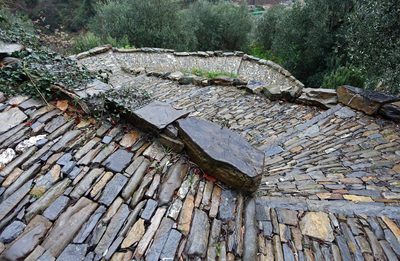
Traditional knowledge: how calades are built
First, the caladeur, name given to the craftsman, must prepare the ground. He spreads the earth, the cup, and the lady. Then he digs a hole with a small pickax and hammers a stone vertically. He has other stones, tightly packed together. The flatter side of the stone should be placed on top to facilitate walking. So we say that the calade is a standing ground. A pavement, for example, is a coated floor!
Among the techniques used, the paver takes care to leave natural joints between the stones. Calade is soil that breathes. It is a dry stone floor, which has many advantages: when it rains, water seeps between the joints. It crosses the stones to go into the earth. No risk of flooding! And when the pavement starts to shine under the Provencal sun, the water contained in the basement can evaporate easily!
To make a calade, the caladeur starts by installing the largest stones and draws the shape of the calade, sometimes a pattern. Once these main stones are in place, it fills the different spaces with smaller stones.
The caladeur also adapts its work according to the surrounding terrain and the use of the calade. In the sloping streets of the village, for example, the caladeur will build a staircase with steps adapted to a man’s step. On the other hand, on country roads, it provides for donkey steps! Indeed, the steps will then be very wide, and better suited to the passage of donkeys, mules or horses.
Key places to see calades
Among the many beautiful villages of the Verdon, here is the “Verdon Secret” selection of the most beautiful places to see calades! Don’t hesitate to ask us for more advice when you book an activity on our site!
At the foot of the immense cliffs of the Verdon, the village of Moustiers-Sainte-Marie will be a very good starting point to discover the Provencal cobbled streets. Indeed, what a pleasure to stroll through the village, which is built around tangled calades, small fountains and craftsmen’s workshops! And let’s not forget that the city is famous all over the world for its earthenware …
A little further on, overlooking the village of Moustiers Sainte-Marie, the sanctuary of Notre-Dame-de-Beauvoir is perched on a slope of the rock face and will welcome the brave walkers who will be well rewarded once they reach the top ! One climbs up there in about a quarter of an hour, walking on a steep calade and dotted with the fourteen Stations of the Cross. The chapel, at the very top, offers a breathtaking panorama of the Lake of Sainte-Croix and the roofs of the village, as well as as as far as the Valensole plateau.
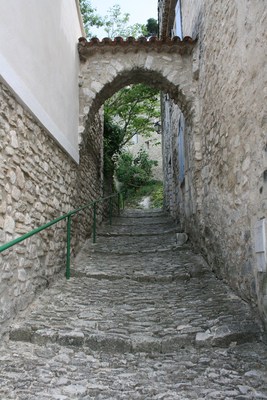
Other villages not to be missed
Then follow the magnificent Lake Sainte-Croix and stop in Bauduen. This small village, leaning against the cliff, with its feet in the water of the lake, is a medieval town with a fiercely Provençal accent. The calades contribute to its charm and invite you to stroll through the village center.
On the other bank, the village of Sainte-Croix du Verdon is one of the most interesting to visit. Its architecture is particular. One uses indeed the splendid calade in staircases to reach the various floors of the village. Beautiful vaulted houses and charming little squares are located on the different floors of the town, adding to the charm of the village.
Further south, Cotignac is a village where you must absolutely stop. Its alleys literally lead you to the foot of the Rock, this famous cliff where calades give you access to troglodyte dwellings and caves decorated with splendid stalactites. A village in a prodigious setting, in the heart of green Provence.
Other villages include Trigance, an eagle’s nest clinging to the rock some 800 m above the Jabron valley. Its small streets in calades shelter treasures. If you go to see Sublime Point, stop in Rougon, it’s very close!

